What are the best places to sell clothes online? There are quite a few places, but not all of them work well. Whether someone has started a new clothing line or wants to sell their used clothes, a good marketing platform is essential to succeed.
Some of the best places to sell clothes online include Depop, Mercari, Tradesy, Poshmark, Etsy, and more. These online selling platforms are trustworthy and easy to navigate and use. Most places ask for a small fee when sellers make a sale every time.
Below we have a complete guide on selling clothes online and making money. This will help sellers and buyers too. The platforms listed below are a great place to get started, whether you are selling some clothes that you’ve made yourself – or simply clearing out the wardrobe.
They are easy to use, so there is no hassle when posting new adverts, withdrawing money, or making sales. Let’s get started!
Here are the 16 of the best places to sell clothes online.
16 Best Places To Sell Clothes Online
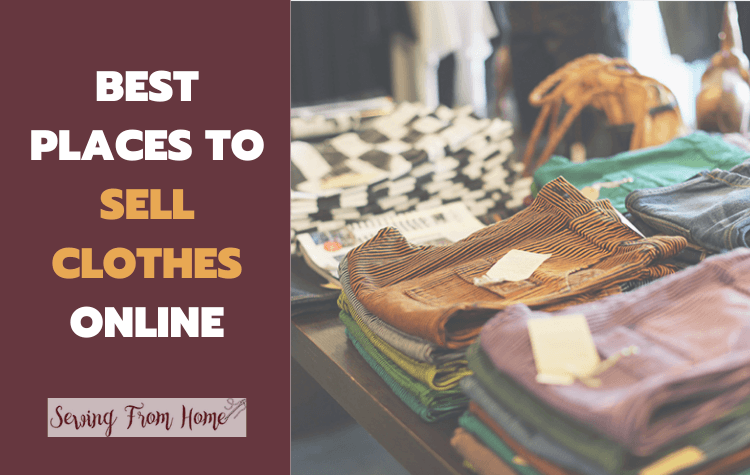
There are a number of different places where you can sell clothes online, from consignment shops to online marketplaces. And each has its own advantages and disadvantages. So which one is right for you?
Here’s a look at 16 of the best places to sell clothes online, along with their pros and cons:
1. Etsy
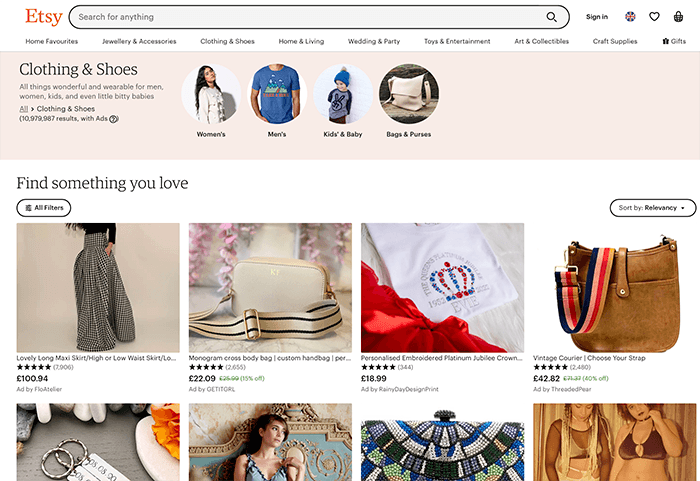
Etsy is a popular online marketplace for handmade and vintage items. If you’ve got clothes that fit into either of those categories, then Etsy is definitely worth considering.
The big advantage of Etsy is that it’s a well-established platform with a large audience. This means that you’re more likely to find buyers for your clothes on Etsy than on some of the other sites on this list.
Their prices are low, and they attract a ton of customers. Etsy only asks for a small commission from any sale and charges a 3% processing fee from the seller. Overall, sellers seem pretty satisfied with the marketplace.
To increase the audience and reach more buyers, sellers need to network to get a higher ranking on Etsy. The higher the shop ranks, the higher the shop will appear in the search results.
Just remember that because Etsy is primarily a marketplace for handmade and vintage items, it might not be the best place to sell mass-produced clothing.
But for those of us sewing and making our own clothes? It’s great place to build a business!
2. Poshmark
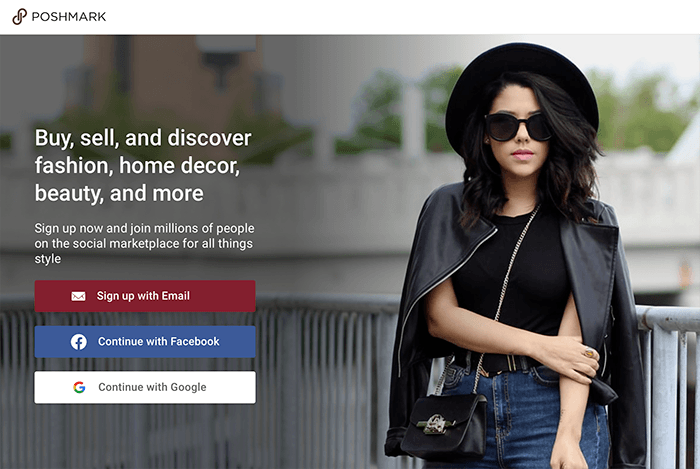
Poshmark is a social marketplace for fashion, similar to Etsy. But unlike Etsy, Poshmark focuses exclusively on clothing and accessories.
One of the things we love about Poshmark is that it doesn’t charge listing fees. So you can list as many items as you want without having to worry about any upfront costs. Poshmark also takes a smaller cut of your sales than Etsy does, so you’ll keep more of the profits.
The downside of Poshmark is that it’s not quite as well-established as Etsy, so you might have a harder time finding buyers for your clothes. And because Poshmark is a social platform, you’ll need to put in some effort to build up a following before you start selling.
Sellers can establish their shop on a mobile app. Poshmark allows sellers to advertise used clothing (in good condition); however, the app is mainly geared towards selling and buying name brands and designer clothes.
They provide sellers with prepaid shipping labels, so when the buyer pays for delivery, simply paste the waybill on the box or bag and wait for the delivery person to pick up the parcel.
3. The RealReal
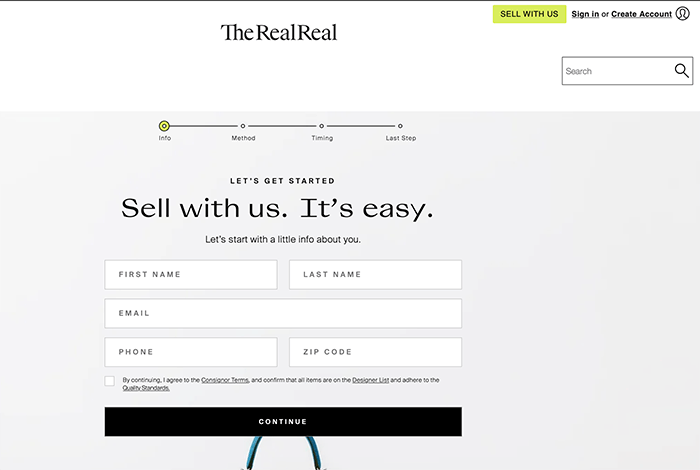
The RealReal is an online consignment store for luxury fashion. If you’ve got high-end clothes (or prom dresses!) that you’re looking to sell, then The RealReal is definitely worth checking out.
The big advantage of The RealReal is that it specializes in luxury fashion. So if you’ve got designer clothes to sell, you’re more likely to find buyers on The RealReal than on some of the other sites on this list.
The platform is known for only selling classy name brands meaning Gucci, Chanel, Louis Vuitton, Miu Miu, and much more. Sellers can easily make around 80% of the resale price.
The downside of The RealReal is that it’s a consignment store, so you won’t get paid until your clothes sell. And because it specializes in luxury fashion, it’s not the best place to sell mass-produced clothing.
Sellers can deliver the clothes to buyers via USPS or organize free pickup from their homes.
4. eBay
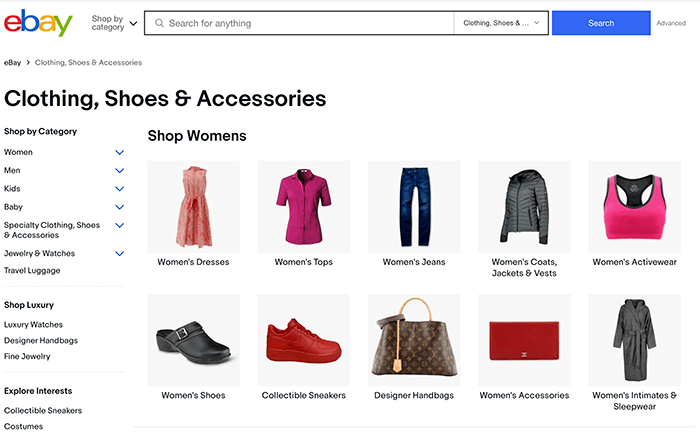
eBay is one of the oldest and most well-known online marketplaces. If you’re looking for a platform with a large audience, they don’t come much bigger than eBay!
The big advantage of eBay is that it’s a well-established platform with a large audience. This means that you’re more likely to find buyers for your clothes on eBay than on some of the other sites on this list.
eBay allows the sale of any branded clothing, used clothing, or brand new clothing lines.
Many people suggest eBay because the marketplace does not charge for the first 250 item listings. However, afterward, they ask for 0.35% per listing, and when the item is sold, they charge 15% for items sold under $2,000 and 9% for items sold over $2,000.
5. ASOS Marketplace
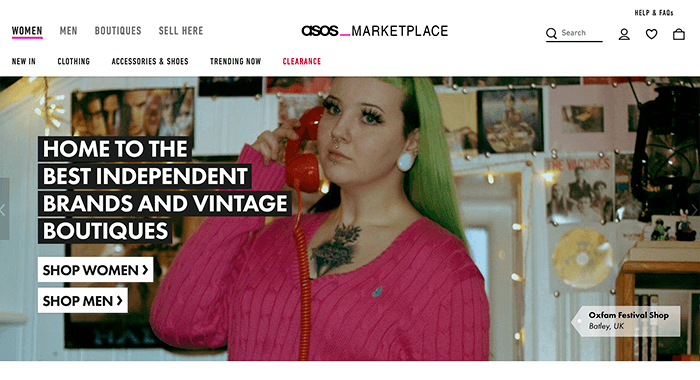
Asos Marketplace, another excellent platform for small businesses to sell their items, only charges a 10% commission on the sale price. On Asos Marketplace, people usually buy and sell vintage clothing and items. But there is no harm in advertising non-vintage clothes.
Asos Marketplace is basically a thrift store that operates online. Sellers can make a nice profit from their sales.
The downside of ASOS Marketplace is that it only accepts sellers from certain countries. So if you’re not in the UK, US, Canada, Australia, or New Zealand, you won’t be able to sell on ASOS Marketplace.
6. LePrix

LePrix offers a convenient online consignment experience, allowing you to sell clothes from the comfort of your own home. They also have a wide selection of designer labels, making it a great option if you’re looking to get rid of high-end pieces.
However, this is not the place to sell your handmade clothes and mid-range pieces!
7. ThredUp
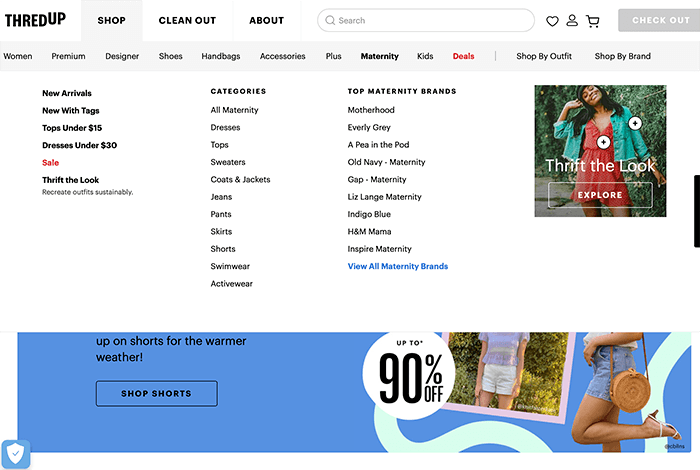
ThredUp is an online consignment shop, which means that you send them your clothes and they sell them for you. You get a cut of the profits, and they handle all of the shipping and customer service.
It’s extremely easy. You just order a “clean out kit” from them, fill it up with clothes, and send it back. They take care of the rest.
One thing to keep in mind if selling your clothes on ThredUp is that they’re very selective about the clothes they accept. This is so you know that your items will actually sell, but it does reduce some of the options available to sellers.
The downside of ThredUp is that you won’t make as much money as you would if you sold your clothes directly to a buyer. And there’s also a risk that your clothes could get lost in the mail or damaged during shipping.
8. Refashioner
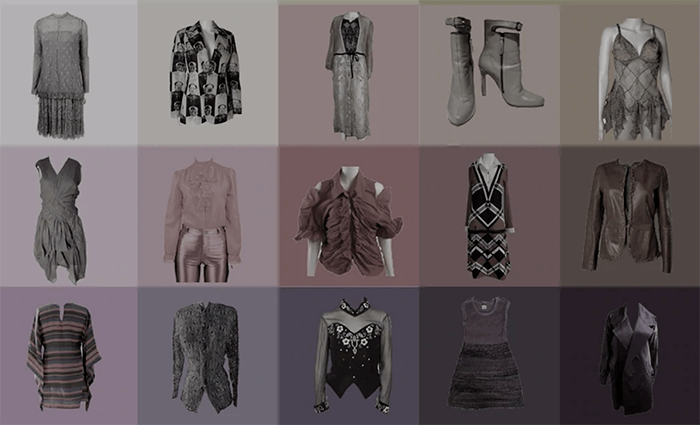
Refashioner is an exclusive vintage clothes-selling marketplace. Acceptance as a seller on Refashioner is a bit more complicated than on other platforms, mainly because of its high standards and unique concept.
Refashioner makes sure that the clothing sellers advertise are 100% vintage, and by vintage, they mean a dress or a leather jacket that was worn in the 1970s or 1990s.
A buyer can actually search by decade (as far as the pre-1940s). So, if grandma’s old vintage skirt is gathering dust, try selling it on Refashioner.
9. Tradesy
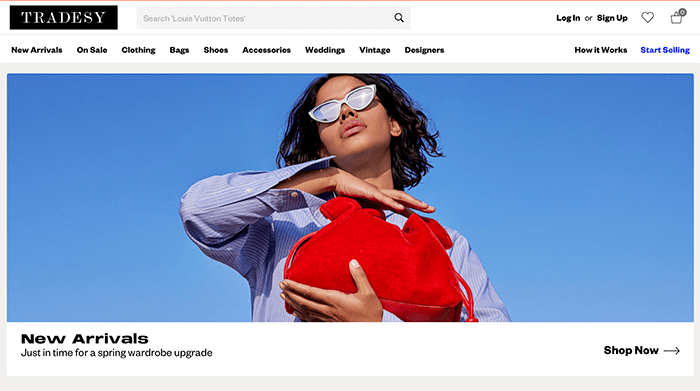
Tradesy sells just about anything. Although they accept clothing brands such as J. Crew and Zara, their main focus is to sell designer brand items like Louis Vuitton, Prada, Gucci, etc.
It’s one of the more user-friendly marketplaces to use to sell clothes online, and it comes with a handy built-in pricing tool that does all the work of figuring out how much to charge for your item.
Once sellers upload the clothes they want to sell, Tradesy improves the quality of the product images so it can attract more attention from customers. Sellers set the price for their items, or Tradesy can set a fixed price for them (based on smart data).
Tradesy will send a prepaid shipping kit to the seller when the customer buys an item. Tradesy charges $7.50 for items less than $50 and $19.8 for items that cost more than $50.
Fun fact: Tradesy has sold over one billion dollars of pre-loved fashion, and most of those items were in the designer fashion category.
10. Depop
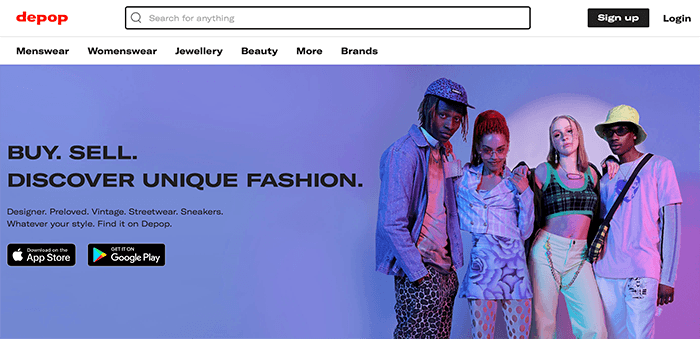
This platform is full of unique and quirky clothing that people cannot wait to get their hands on.
Depop has more than 15 million users in total – and growing fast. Users can buy and sell popular brand products and independent brands (small businesses with their own clothing lines).
Depop also gives sellers the option to assist them with shipping.
Sellers can list their items for free, but Depop’s fee is 10% once they make a sale. Sellers get paid immediately after the item gets sold, and they can decide how little or how much they want to sell the clothing for.
11. Mercari
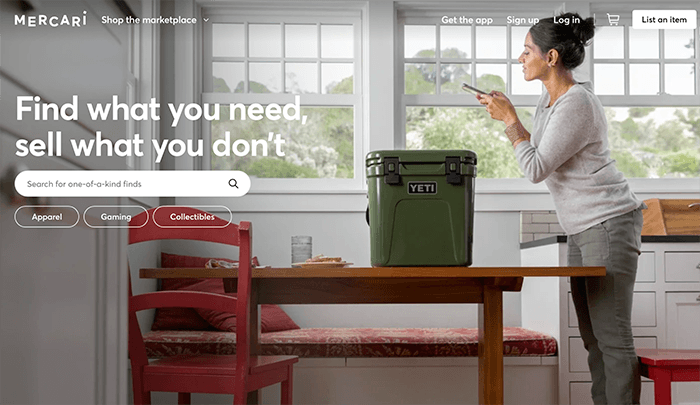
Mercari is among the most popular marketplaces for selling clothes online. People list more than 350,000 per day on Mercari – a truly staggering amount of clothing!
Buyers and sellers can choose from three shipping providers to fit your budget.
Keep in mind that the shipping rates also depend on the products or items’ size, height, and weight. Mercari charges a flat fee of 10% on all sold items.
12. Kidizen
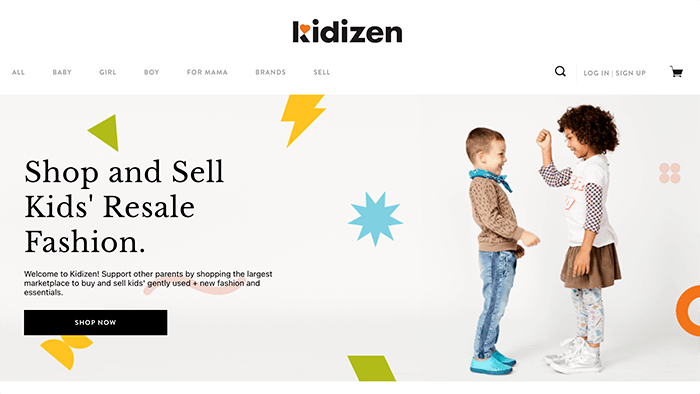
Kidizen is a great online platform to sell ‘gently used’ kids’ used clothing. This is a useful site for mommies to make an extra buck on the side, and a great way to put those used clothes to use when they no longer fit!
It is an easy-to-use app, and the process of setting up a storefront is relatively straightforward.
When that is out of the way, you can begin promoting clothing from top-rated brands such as Tea, Mini Boden, Matilda Jane Clothing, etc. Kidizen deducts 12% from the list price along with an extra $0.50 for the marketplace fee.
13. Vinted

Marketed as a way to ‘declutter your wardrobe’, Vinted is a wonderful marketplace for both buyers and sellers.
The fantastic thing about Vinted is that it is entirely free to use. Sellers and buyers can download the Vinted app on their mobile devices and browse until something catches their eye. The caveat, of course, is that while the app offers to ship, you will still have to pay for it.
The shipping fee depends on the height and weight of the package.
When listing items, sellers can choose if their item is available for bundling (customers can buy more than one item at once), and sellers can advertise discounts and adjust prices whenever they would like to.
14. Buffalo Exchange
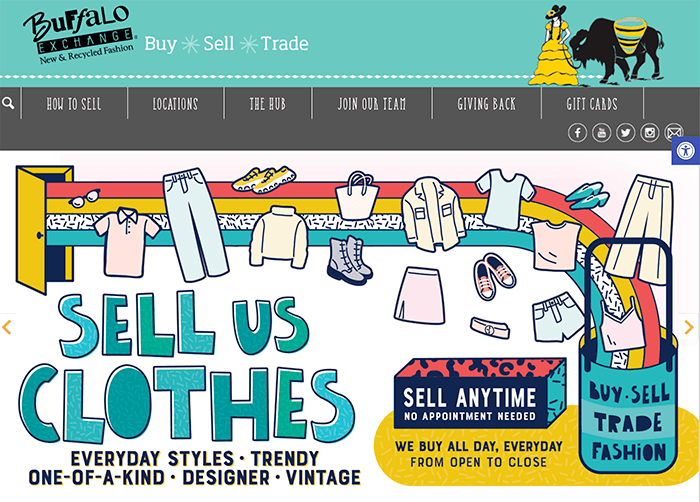
Buffalo Exchange has a physical store, but sellers can send their clothing to Buffalo Exchange, too.
This site operates what is known as a sell-by-mail program. They send prepaid shipping bags to people who want to sell their clothing. Buffalo Exchange keeps the seller updated on what they want to buy.
Sellers can choose to be paid via PayPal, check, or store credit. They pay the seller 30% of the item’s selling price if they want to be paid via check or PayPal and 50% if they select store credit. They usually only purchase designer clothing (both male and female) in like-new condition.
15. VarageSale

With VarageSale, vendors can only sell in their local area and do not have to ship to other states or countries. Sellers simply sign up, select the location they want to do business in, and get verified by VarageSale.
This marketplace is free to use, and it can cut some costs on shipping and packaging because sellers can deliver the clothing themselves or organize a meet-up with the buyer in their area. There are no hidden fees – but the nature of the program makes it much more of a niche offering.
16. Storenvy
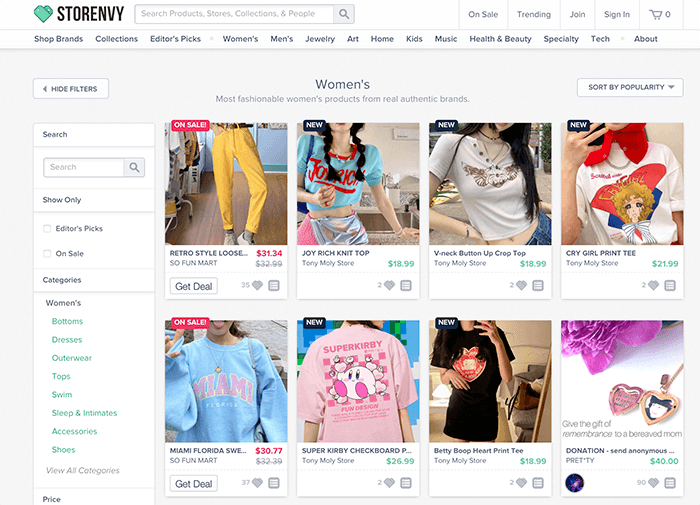
Statistics show that Storenvy has over five million visitors a month, so there is a wide audience sellers can target. Storenvy charges a fee of 10% on each sale, but sellers can upload up to 1000 products for free.
Start by building a customized online store on Storenvy. It only takes a few minutes. Once the store is up and running, begin posting the clothes you want to sell.
Storenvy claims to be the world’s most socially driven marketplace. While it’s not the largest of marketplaces, there’s a strong community spirit and that familiar Etsy vibe towards indie brands.
Is Selling Clothes Online Profitable?
Selling clothes online can definitely be a good side-hustle, and people can earn great profits, too; however, sellers need to know how to manage their finances because other costs must be added.
Marketplaces ask fees whenever a customer buys an item. This will be deducted from the item’s sale price. Marketplaces like eBay and Mercari only charge about 10%, but delivery fees must also be considered.
If the seller does not require the buyer to pay for shipping, then they would have to pay for delivery out of their pocket, which can lower your profit.
For many users, it’s not a case of making a profit.
These sites represent a great opportunity to dispense with wardrobe-clogging items that we no longer want or need, and to receive a nice payment for doing so.
But make no mistake – there’s a HUGE market for designing and selling clothes for profit. Many independent sellers have made a fortune on platforms like Etsy where the start-up costs are low.
